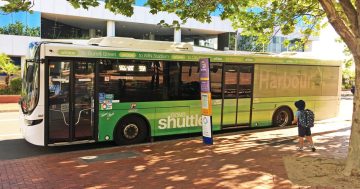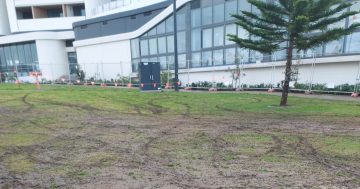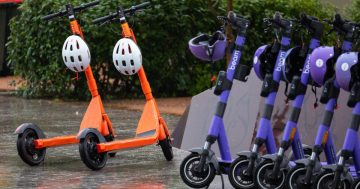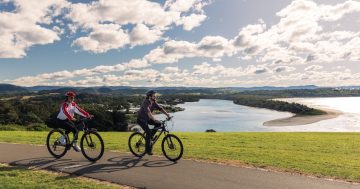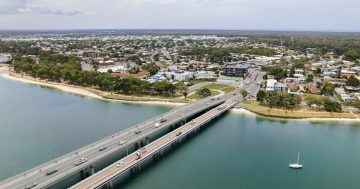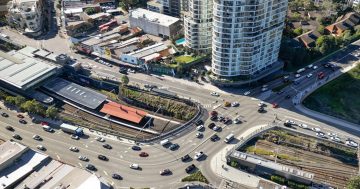Lauren Pearson and Ben Beck* say getting women more interested in cycling will require better biking infrastructure, designed by women
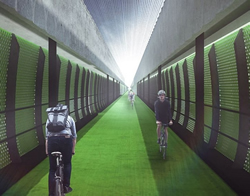 The number of women riding bikes has increased dramatically in cities globally, including a 50 per cent rise in London during the COVID lockdown, and near-equal gender participation in Paris after pop-up bike lanes were put in place.
The number of women riding bikes has increased dramatically in cities globally, including a 50 per cent rise in London during the COVID lockdown, and near-equal gender participation in Paris after pop-up bike lanes were put in place.
In Australia, however, cycling remains a male-dominated and male-designed activity, where men outnumber women by two to one.
Despite low numbers, our research has found three in four women in one state (Victoria) are interested in riding their bikes, which raises the question: What’s stopping them?
Our new study found that women experience gendered barriers to riding a bike compared with men.
This includes a lack of supportive infrastructure, such as bike paths or protected lanes, to make them feel safer in traffic.
We found involving women in decisions about implementing new bike infrastructure, as well as expanding the use of e-bikes through financial incentives, are key to getting more women on the road.
Women face substantial barriers to bike riding
Our study involved a survey and in-depth interviews with more than 700 people across Melbourne.
Women in the study described a lack of confidence about bikes, from buying and maintaining them, to riding them.
When trying to buy one, for instance, women described being treated as “just a girlie with a bike”, often leaving shops with a bike insufficient for their needs.
We found that inclusive community groups such as Wheel Women and Chicks Who Ride Bikes can play a key role in tackling this by empowering women to ride.
Many women in the study also expressed a desire to ride more, but said lighting on bike paths was non-existent, inadequate or turned off after hours, leading them to fear for their personal safety.
This limited how much they were willing to ride their bikes in winter, or for other trips outside of daylight hours.
To compound this, women reported bike paths often detouring into dark underpasses.
While underpasses protect bike riders and walkers from overhead traffic, they often feel hidden from public view, and have inadequate lighting and limited escape routes.
There are ways to address this, too, such as reflective surfaces, gentle turns to improve visibility, and encouraging greater community use of the spaces.
Including women in planning decisions
Women take different kinds of trips and ride different bikes from men.
Women also have different preferences for biking infrastructure that makes them feel safe and comfortable.
And yet, when it comes to creating spaces for people to bike in cities, women don’t have a clear seat at the table.
In Australia, the majority of biking infrastructure is implemented by transport engineers, of which only 15 per cent are women.
Our study highlights the critical importance of protected bike lanes to encourage more women to ride a bike.
Protected bike lanes limit interactions between bikers and car drivers, minimising risk of injury and potential harassment from motorists.
Despite these benefits, a 2018 study found that 99 per cent of all bike lanes on Melbourne roads remain unprotected.
Women with children described wanting to make trips by bike in their local areas, but had concerns about “missing links” between bike paths, leaving them vulnerable to motor vehicle traffic.
Building protected bike lanes across cities is a difficult task, but there are other options.
For instance, Australian cities could design networks of protected bike lanes that stitch together 30kmh speed zones and low-traffic neighbourhoods.
E-bikes are out of reach for many
More than half of the women in our study were concerned about collisions with motor vehicles.
And significantly more women reported concerns about their physical ability to ride a bike.
They described feeling like they couldn’t “keep up” with traffic, or worried about their physical fitness to escape tricky situations.
E-bikes allow women to transport children without worrying about their physical ability, and can allay concerns about keeping up with cars.
Despite the benefits, however, the cost of e-bikes remains out of reach for many.
E-bike financial incentives, such as tax rebates and car trade-in schemes, are common all over the world, but don’t yet exist anywhere in Australia.
Such incentives are critical to enabling a greater number and diversity of women to ride a bike.
As we move toward net-zero-emission cities, the shift to sustainable and active modes of transport is essential.
Empowering women to drive the conversation about what they need to be able to ride a bike – and increasing the number of women designing and planning biking infrastructure – is crucial to ensure women aren’t left behind.
*Lauren Pearson, Postdoctoral Research Fellow, Monash University. Ben Beck, Associate Professor and Head of Sustainable Mobility and Safety Research, Monash University.
This article first appeared at theconversation.com


